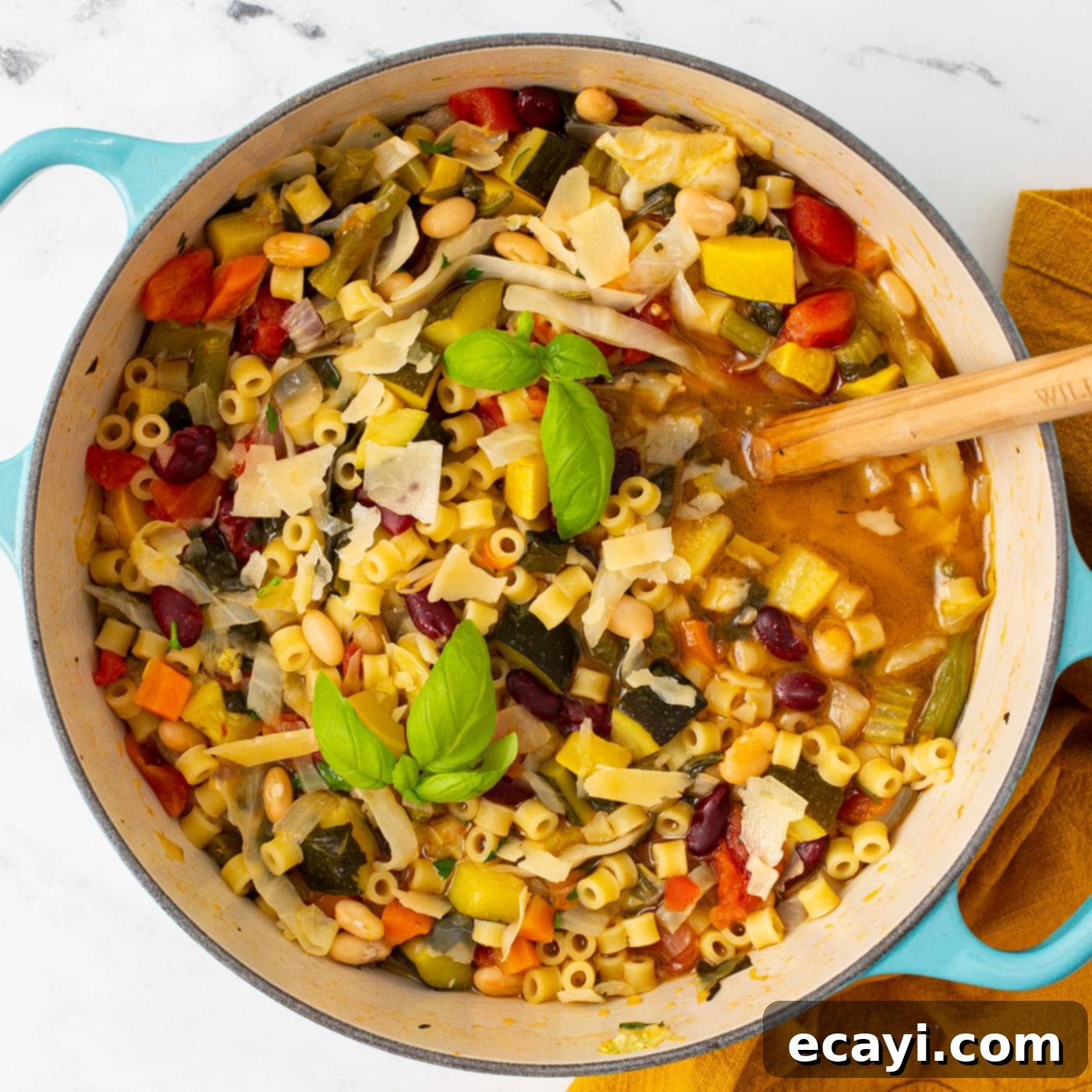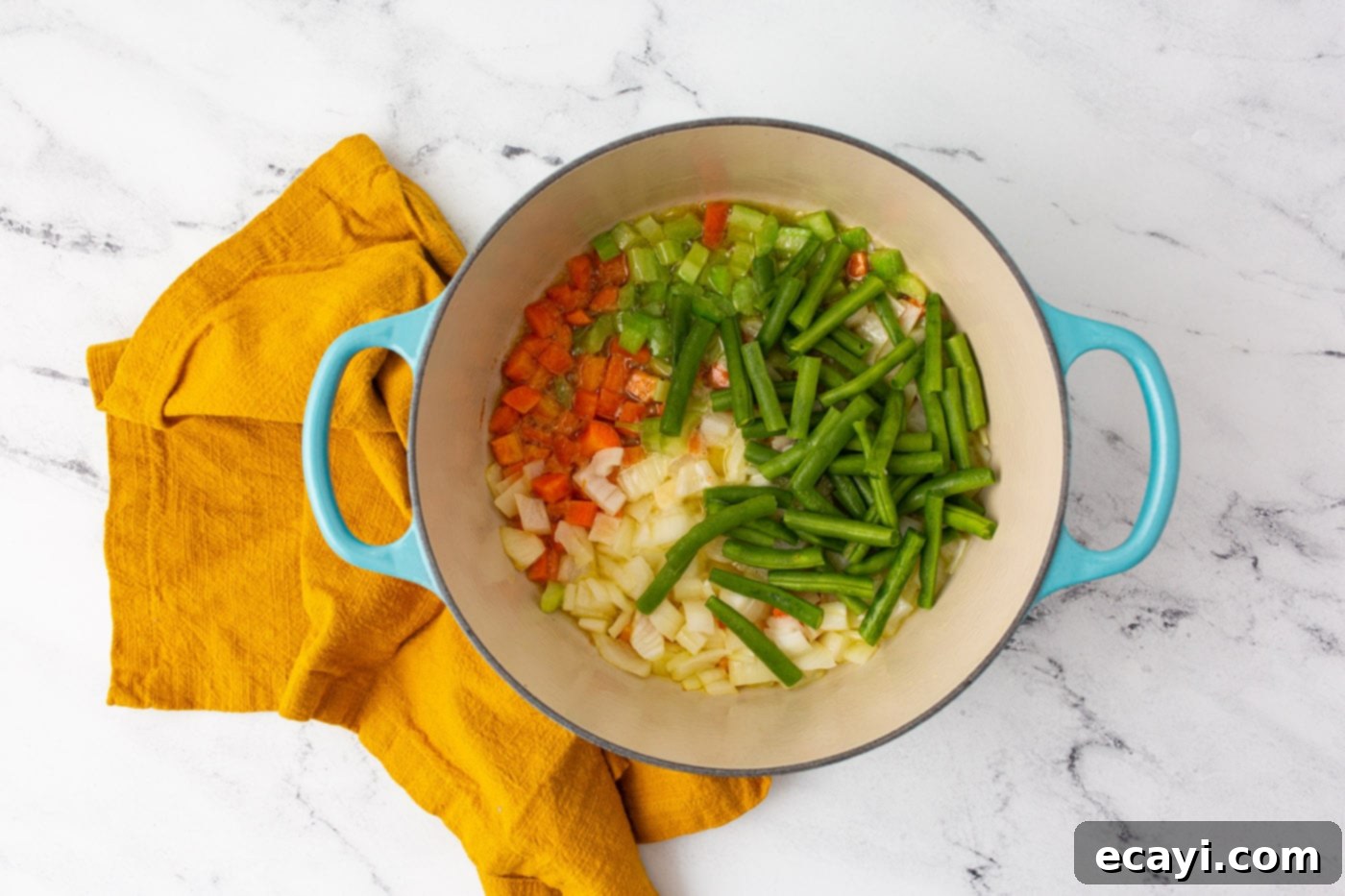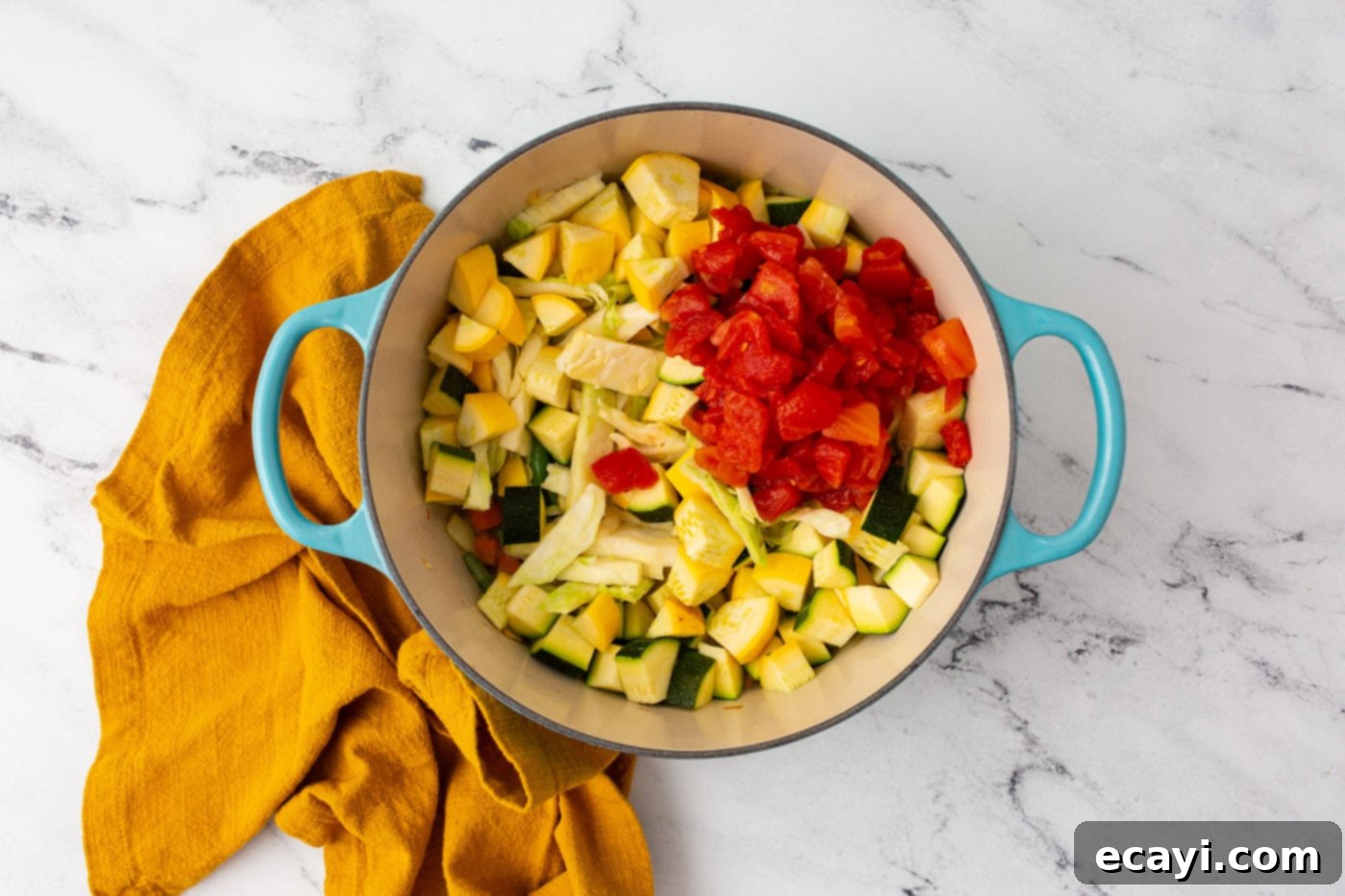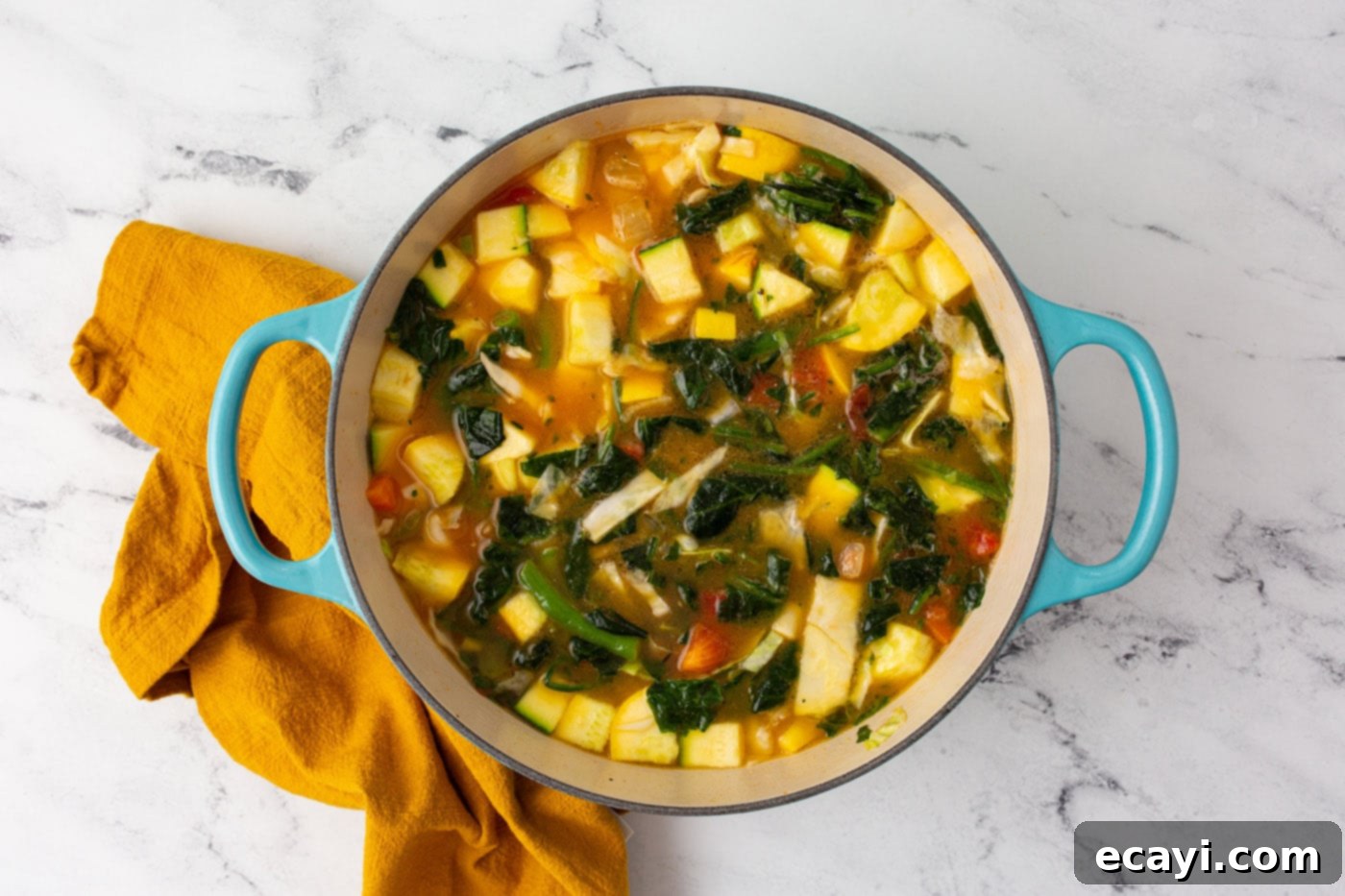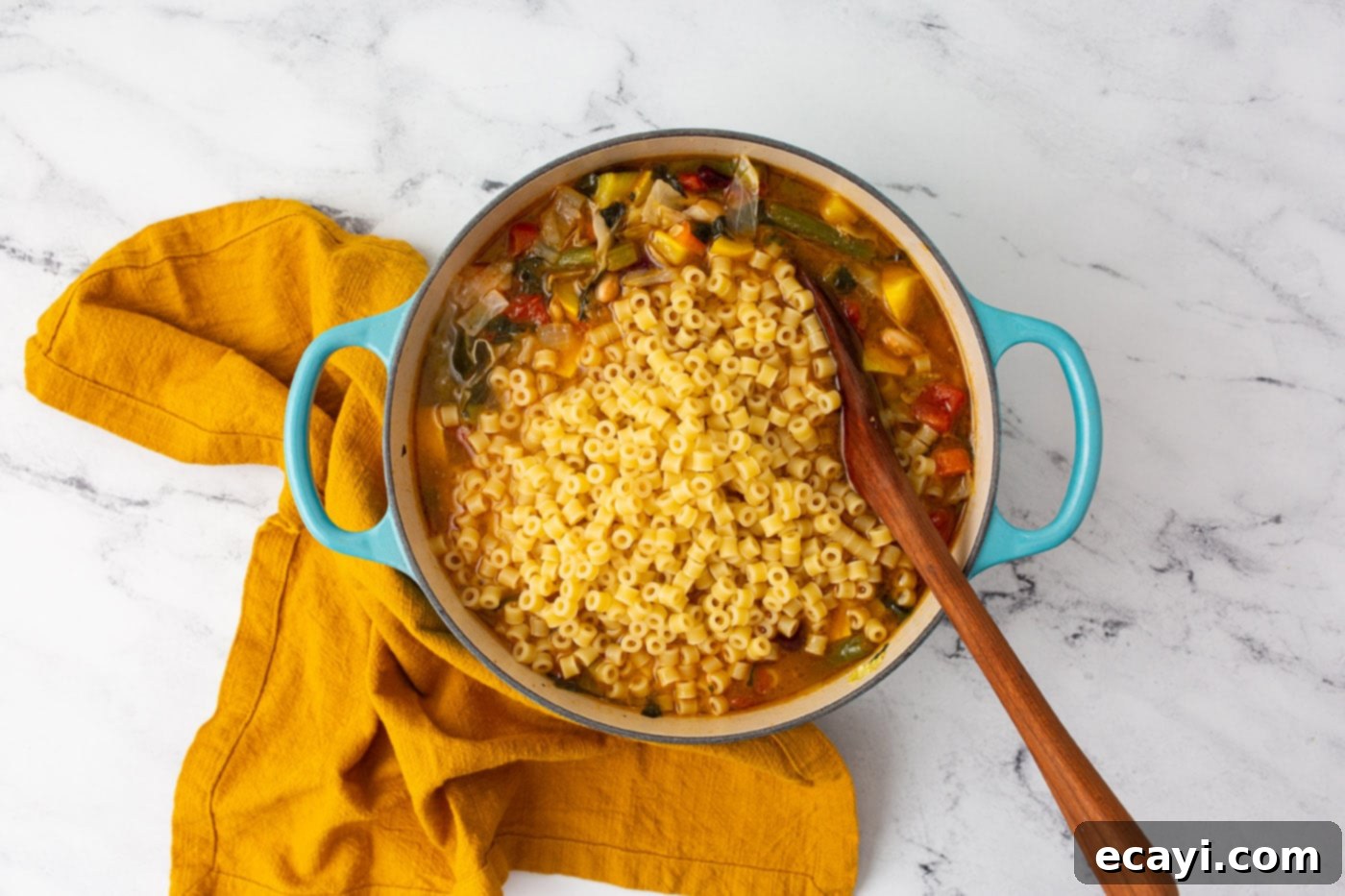Hearty & Healthy Minestrone Soup: A Versatile and Delicious Classic Italian Recipe
Minestrone soup is more than just a dish; it’s a comforting bowl of tradition, brimming with fresh vegetables, beans, and pasta, all simmered to perfection in a rich, tomato-infused broth. This classic Italian soup is renowned for its incredible versatility and heartwarming qualities, making it a beloved staple in kitchens worldwide. With countless variations, each spoonful promises a delightful experience, perfectly balancing wholesome goodness with satisfying flavors.
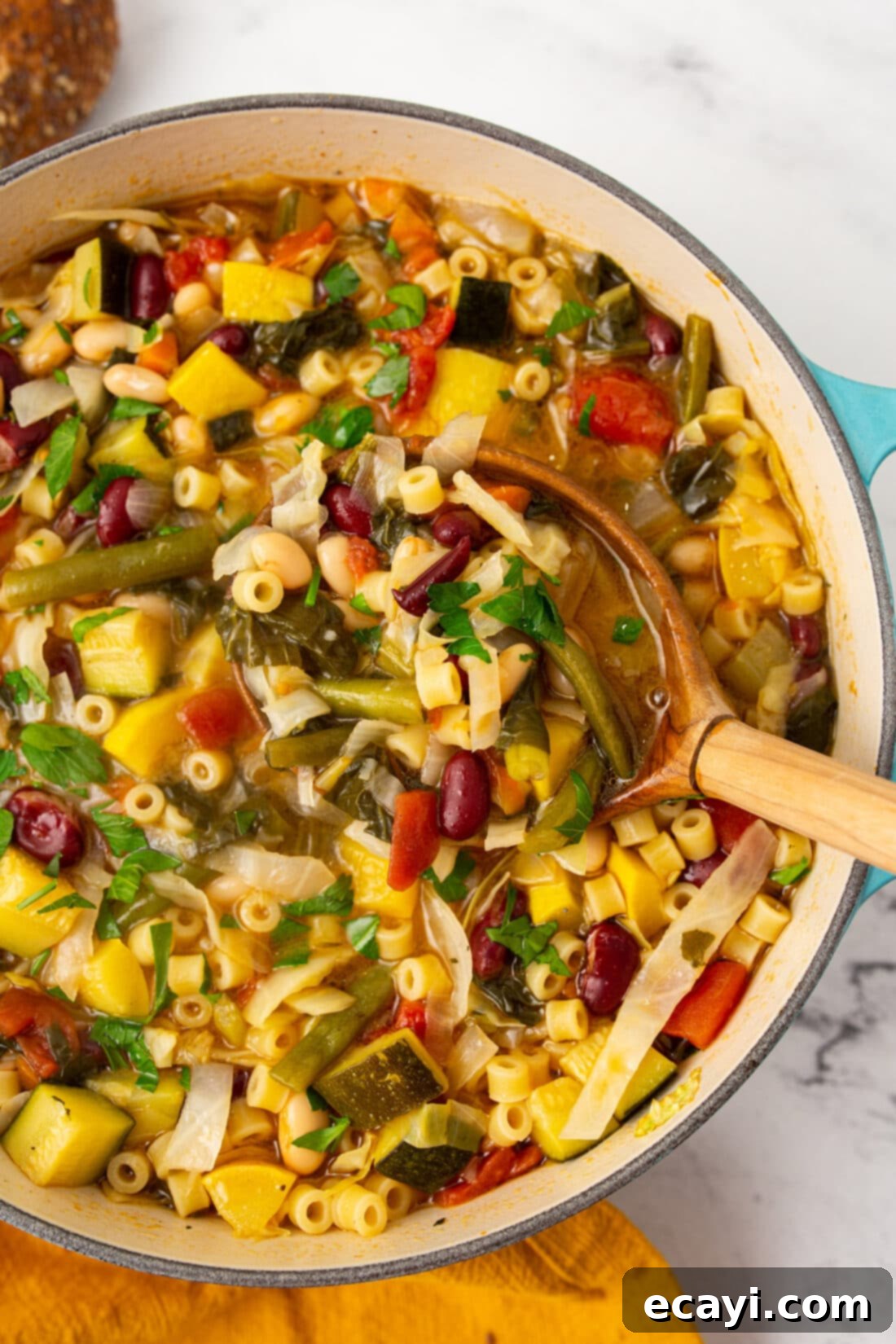
Dive into the world of Minestrone, where every spoonful offers a taste of Italy’s culinary heritage. This recipe provides a robust and flavorful foundation that can be easily adapted to your preferences, dietary needs, and seasonal produce. Whether you’re seeking a light lunch or a substantial dinner, Minestrone soup delivers warmth, nourishment, and incredible taste, making it an ideal choice for any day of the week. Its ability to transform simple ingredients into a complex and satisfying meal is what makes it a true culinary gem.
Why This Minestrone Recipe Works So Well
This particular minestrone soup recipe stands out for its perfect balance of comfort, nutrition, and delightful flavors. It’s a truly healthy and wholesome meal, thanks to its vibrant medley of colorful vegetables, protein-rich beans, satisfying pasta, and expertly blended seasonings. Each ingredient contributes to a symphony of tastes and textures, creating a hearty yet light soup that’s incredibly satisfying without being heavy. The blend of fresh produce ensures a high vitamin and fiber content, making it a guilt-free pleasure.
Similar to our popular vegetable rice soup, this minestrone recipe excels in its ability to pack a significant nutritional punch. However, it takes versatility to another level. The beauty of minestrone lies in its adaptability; you can easily swap out vegetables based on what’s in season or what you have on hand, making it a fantastic “clean out the fridge” meal. This flexibility allows for endless experimentation, ensuring the soup never gets boring and always feels fresh, no matter how many times you make it. It’s a dish that truly encourages creativity in the kitchen.
Beyond its health benefits and versatility, this minestrone recipe is incredibly practical. It makes for excellent leftovers, with the flavors often deepening and becoming even more pronounced the next day. It’s a comforting embrace on a chilly day, providing warmth from the inside out. Preparing a large batch means you’ll have wholesome, delicious meals ready for several days, simplifying meal prep and reducing food waste. This recipe doesn’t just nourish your body; it also brings convenience and joy to your culinary routine, proving that healthy eating can be both easy and delicious.
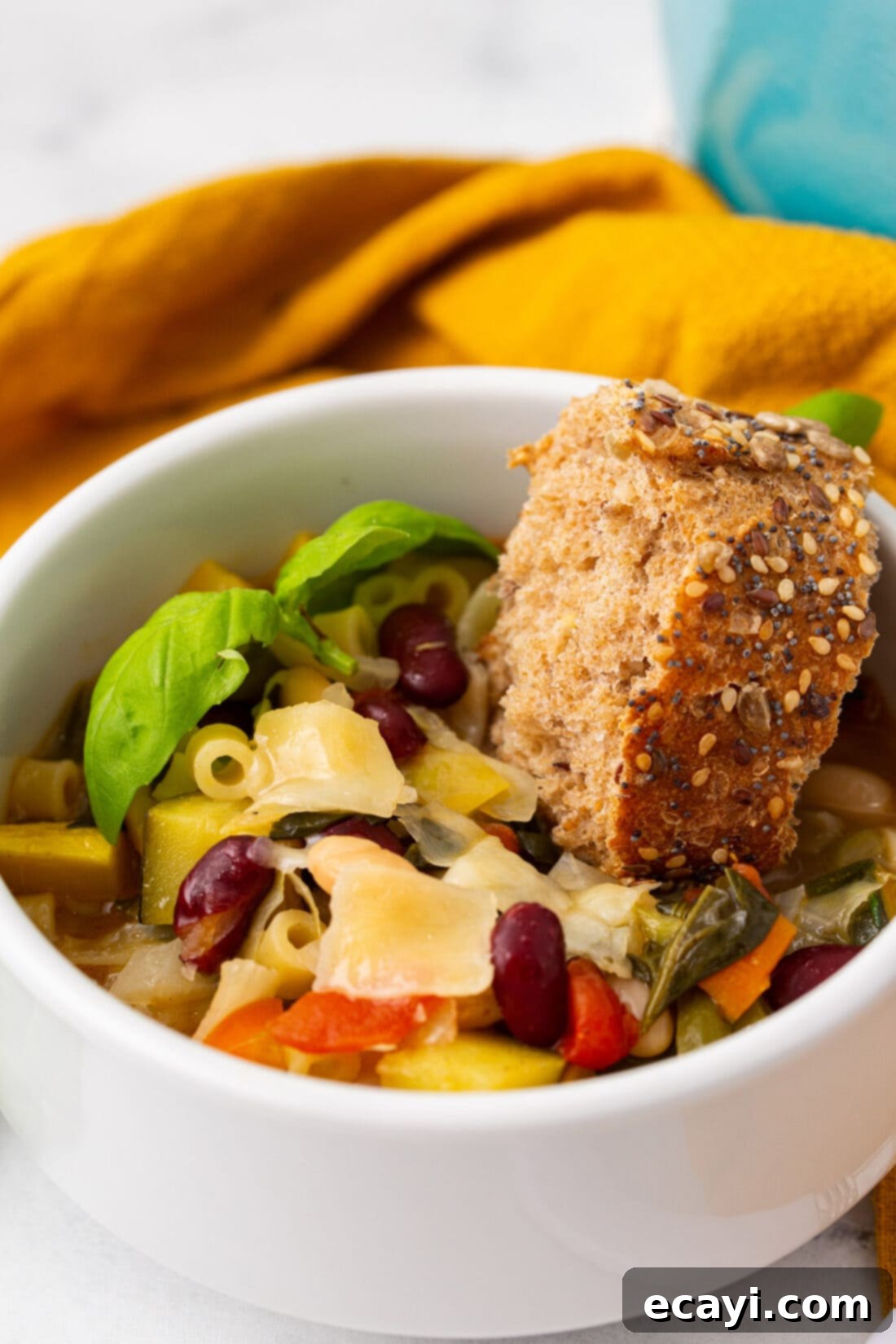
Key Ingredients for Your Delicious Minestrone
Crafting the perfect minestrone starts with selecting high-quality ingredients. While the full, precise measurements and step-by-step instructions are available in the printable recipe card at the end of this post, let’s explore the essential components that bring this soup to life. From vibrant vegetables to hearty beans and pasta, each element plays a crucial role in building the soup’s rich flavor profile and satisfying texture. The beauty of minestrone is that it can be adapted to use what you have on hand, making it a forgiving and economical meal.
Our recipe focuses on fresh, readily available produce and pantry staples, ensuring that anyone can whip up a batch of this comforting soup. The combination of flavors and textures is designed to create a balanced and deeply satisfying experience. Keep reading for detailed information on ingredient choices and fantastic substitution suggestions that will help you customize this minestrone to your heart’s content, catering to various tastes and dietary needs.
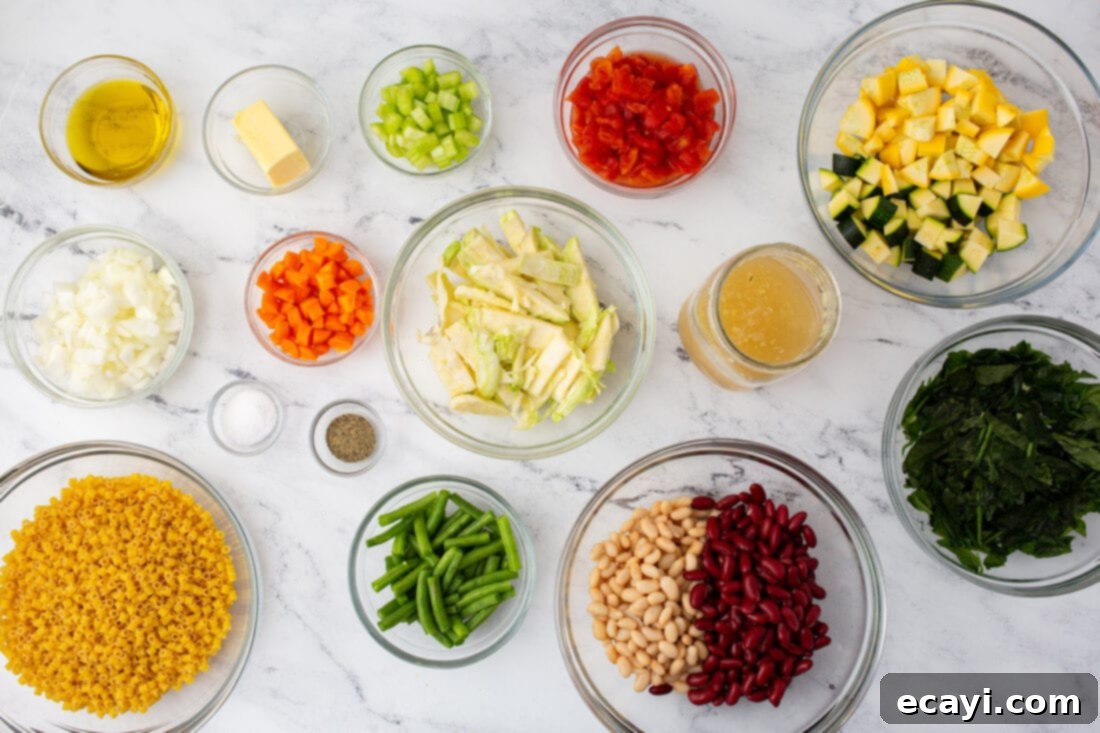
Ingredient Spotlight & Smart Substitutions
One of the greatest joys of making minestrone is the freedom to customize it. Here’s a closer look at the key ingredients and some smart substitutions to help you make this soup truly your own, ensuring it’s always fresh, exciting, and perfect for your palate.
Veggies – The Colorful Heart of Minestrone
This recipe utilizes a generous assortment of vegetables, including carrots, onion, celery (the classic mirepoix base), fresh green beans, cabbage, zucchini, squash, fresh spinach, and canned diced tomatoes. This combination creates a rich flavor base and a beautiful spectrum of colors and textures. Minestrone soup is incredibly forgiving, so feel free to embrace its versatility!
- Seasonal Swaps: Don’t hesitate to add or subtract ingredients based on what’s fresh and available in your local market. In the spring, tender asparagus spears or sweet peas could be wonderful additions. For an autumn twist, consider diced butternut squash or hearty sweet potatoes. Even bell peppers (any color) or small florets of broccoli or cauliflower can elevate the complexity and nutritional value of your minestrone.
- Root Vegetables: If you enjoy a starchier soup, diced potatoes (Yukon Gold or Russet work well) or parsnips would make a tasty and thickening addition. Add them at the same time as the carrots to ensure they cook through.
- Leafy Greens: While fresh spinach is used here, heartier greens like kale or Swiss chard can also be excellent choices. If using kale or chard, add them earlier in the simmering process (perhaps with the stock) to allow them more time to soften properly. Always roughly chop larger leaves.
- Consider Frozen: Don’t shy away from frozen vegetables! Frozen green beans, peas, or corn are perfectly acceptable and can save on prep time, especially during off-seasons.
Beans – For Hearty Protein and Fiber
We’ve chosen a combination of great northern beans and dark red kidney beans for their creamy texture and robust flavor. Beans are a fantastic source of plant-based protein and fiber, making this soup incredibly filling and nutritious, a perfect choice for a wholesome meal.
- White Bean Alternatives: Navy beans or cannellini beans (white kidney beans) are perfect alternatives for the great northern beans, offering a similar mild flavor and tender texture.
- Other Bean Choices: Chickpeas (garbanzo beans) or even black beans (though less traditional) could be used to switch things up. Always remember to drain and rinse canned beans thoroughly before adding them to the soup. This step removes excess sodium and helps improve their texture, ensuring they contribute pure flavor.
Pasta – The Satisfying Carb Element
For the pasta, ditalini or mezzi rigatoni are excellent choices due to their small size, which integrates beautifully into each spoonful of soup. They cook quickly and readily absorb the delicious broth, providing a comforting bite.
- Pasta Shape Variations: Orzo, small shells (conchigliette), elbow macaroni, or even broken spaghetti pieces can be wonderful substitutes. The key is to choose small, bite-sized pasta shapes that are easy to eat with a spoon and don’t overwhelm the other ingredients.
- Gluten-Free Options: If you’re looking for a gluten-free alternative, you could substitute with gluten-free pasta or a grain like rice (such as arborio or short-grain white rice). If using rice, note that it will absorb more liquid and take longer to cook than pasta, so adjust your cooking time and liquid levels accordingly.
- Cooking Separately is Key: As a general tip, cooking the pasta in a separate pot of salted water and adding it to individual bowls (or to the main pot just before serving) helps prevent it from becoming mushy and absorbing too much broth. This method is especially beneficial if you plan on having leftovers, as it keeps the soup’s consistency and pasta texture ideal.
Broth and Seasonings – The Foundation of Flavor
The choice of stock is fundamental to the soup’s overall flavor. Vegetable stock keeps the soup vegetarian-friendly and highlights the fresh flavors of the vegetables, while chicken stock adds a deeper, more savory and richer note. Don’t forget the essential salt and pepper to taste, and consider adding a bay leaf during simmering for an extra layer of aromatic complexity. A pinch of dried Italian herbs can also enhance the authentic flavor.
Crafting Your Homemade Minestrone: Step-by-Step
These step-by-step photos and detailed instructions are here to guide you visually through the process of making this incredibly satisfying minestrone soup. For a quick reference to the printable version of this recipe, complete with precise measurements and instructions, simply Jump to Recipe at the bottom of this page.
Making minestrone is a rewarding experience, transforming simple, fresh ingredients into a rich, complex, and incredibly flavorful meal. Each stage builds upon the last, ensuring a harmonious blend of tastes and textures. Follow these detailed steps for a perfect bowl of homemade minestrone every time.
- In a large dutch oven or a heavy-bottomed stockpot (we recommend at least 7.5-8 quart capacity for best results), heat the olive oil and butter over medium heat until the butter is completely melted and shimmering. Add the diced yellow onions, carrots, celery, and trimmed green beans. Sauté these aromatic vegetables for approximately 10 minutes, stirring occasionally, until the onions are translucent and the vegetables have started to soften. This initial step, known as creating a “soffritto,” is crucial for building the foundational flavor of your soup. The gentle cooking coaxes out the natural sweetness and depth from the vegetables.

- Next, incorporate the shredded cabbage, diced zucchini or squash, and the entire can of diced tomatoes (including their liquid) into the dutch oven. Continue to cook for another 10 minutes, stirring periodically. This allows the tomatoes to break down slightly and their flavors to meld beautifully with the other vegetables, adding a vital tang, sweetness, and depth to the broth. The cabbage will start to wilt, becoming tender and absorbing the flavors.

- Pour in the vegetable or chicken stock, add the fresh or roughly chopped spinach, and season generously with salt and pepper to your taste. Stir everything well to combine, ensuring the spinach begins to wilt into the hot liquid. Bring the mixture to a gentle simmer, then reduce the heat to low, cover the pot, and let it cook for about 30 minutes. This simmering period is crucial for allowing all the flavors to fully develop, blend harmoniously, and for the vegetables to become perfectly tender.

- While the minestrone is simmering and its flavors are deepening, cook the ditalini pasta in a separate pot of generously salted boiling water according to package directions until al dente. It’s important not to overcook the pasta, as it will continue to soften slightly when added to the hot soup. Drain the pasta thoroughly once cooked. Cooking the pasta separately prevents it from becoming overly starchy or mushy in the soup and helps maintain the clarity and consistency of your broth.
- Once the soup has simmered for 30 minutes, add the drained and rinsed great northern and dark red kidney beans. Then, carefully add the separately cooked and drained pasta to the soup. Stir gently to distribute all ingredients evenly throughout the rich broth. Continue to heat through for an additional 5-10 minutes, ensuring the beans and pasta are warmed thoroughly and have absorbed some of the delicious, aromatic broth. This final gentle simmer allows all components to marry their flavors.

- Taste and adjust seasonings as needed; you might want a little more salt, pepper, or a pinch of red pepper flakes for a subtle kick. Ladle the hot minestrone soup into bowls. For an extra touch of flavor and freshness, top with grated fresh Parmesan cheese, a sprinkle of finely chopped fresh basil, or fresh parsley. Serve immediately and enjoy your homemade, hearty, and healthy minestrone! This soup is truly a testament to simple ingredients creating extraordinary taste.
Frequently Asked Questions & Expert Tips for Perfect Minestrone
Here are some common questions and valuable tips to help you master this delicious minestrone soup, ensuring every batch is a success and tailored to your needs.
Properly stored minestrone soup can be kept in an air-tight container in the refrigerator for 4-5 days. It’s worth noting that the pasta will continue to absorb the broth the longer it sits, potentially making the soup thicker. If you find the soup too thick when reheating, simply add a bit more vegetable stock or water until it reaches your desired consistency. For best results with pasta texture, consider storing the cooked noodles separately and adding them to individual bowls as you serve; this prevents them from becoming mushy and allows them to maintain their al dente bite.
Yes, minestrone soup freezes beautifully! However, for optimal texture, we highly recommend keeping the pasta separate from the soup if you intend to freeze it. Pasta can become overly soft and mushy when frozen and thawed within a liquid. Allow the soup (without pasta) to cool completely before transferring it to freezer-safe, air-tight containers or heavy-duty freezer bags. It can be frozen for up to 3 months. When you’re ready to enjoy, thaw the soup overnight in the refrigerator, then reheat it gently on the stove or in the microwave. Cook fresh pasta to serve with the thawed soup for the best experience. If you don’t mind softer pasta, you can freeze the entire batch together, but the texture might not be as ideal.
Small pasta shapes work best for minestrone as they are easy to eat with a spoon and integrate well with the other ingredients. Ditalini, small shells (conchigliette), elbow macaroni, or orzo are all popular and excellent choices. Avoid large pasta shapes that might dominate the dish or be difficult to manage in a soup. The goal is for the pasta to complement, not overpower, the vegetables and beans.
Absolutely! This recipe is inherently vegetarian if you ensure you use vegetable stock instead of chicken stock. To make it completely vegan, ensure you substitute the butter used in sautéing with an equal amount of olive oil or a plant-based butter alternative. Also, omit any cheese toppings (like Parmesan) when serving, or opt for a vegan Parmesan substitute. The rest of the ingredients are naturally plant-based, making it a wonderful and flavorful vegan option.
If your soup is too thin, you can simmer it uncovered for a bit longer to reduce the liquid, allowing it to naturally concentrate. Another trick is to mash some of the beans against the side of the pot with the back of your spoon or a potato masher; this releases starch and naturally thickens the broth without changing the flavor much. For a thicker, heartier soup, you might also add more pasta or a starchy vegetable like potatoes. If it’s too thick (which often happens with leftovers as pasta absorbs liquid), simply add more vegetable stock or water until it reaches your preferred consistency when reheating.
Expert Tips for the Best Minestrone:
- Don’t Overcook the Veggies: While you want tender vegetables, avoid turning them into mush. Sautéing the initial aromatics for 10 minutes helps them soften and release their flavors without overcooking. Aim for tender-crisp textures in your final soup.
- Taste and Adjust Seasoning: Always taste your soup before serving and adjust salt, pepper, or other seasonings as needed. The flavors will deepen and develop as it simmers, so a final check before serving is important for that perfect balance.
- Fresh Herbs Make a Difference: While dried herbs are fine in the soup itself, a sprinkle of fresh parsley or basil right before serving adds a bright, fresh aroma and flavor that elevates the dish significantly. Don’t skip this simple garnish!
- Use a Large Pot: Minestrone makes a generous batch, and with all those vibrant vegetables, beans, and broth, you’ll need a spacious Dutch oven (7.5 or 8 quarts is ideal) to accommodate everything comfortably. This also allows for easier stirring and better heat distribution.
- Serve Immediately for Best Pasta Texture: If you’re particular about pasta texture, serve the soup immediately after adding the cooked pasta. The longer it sits, the more the pasta will absorb the liquid.
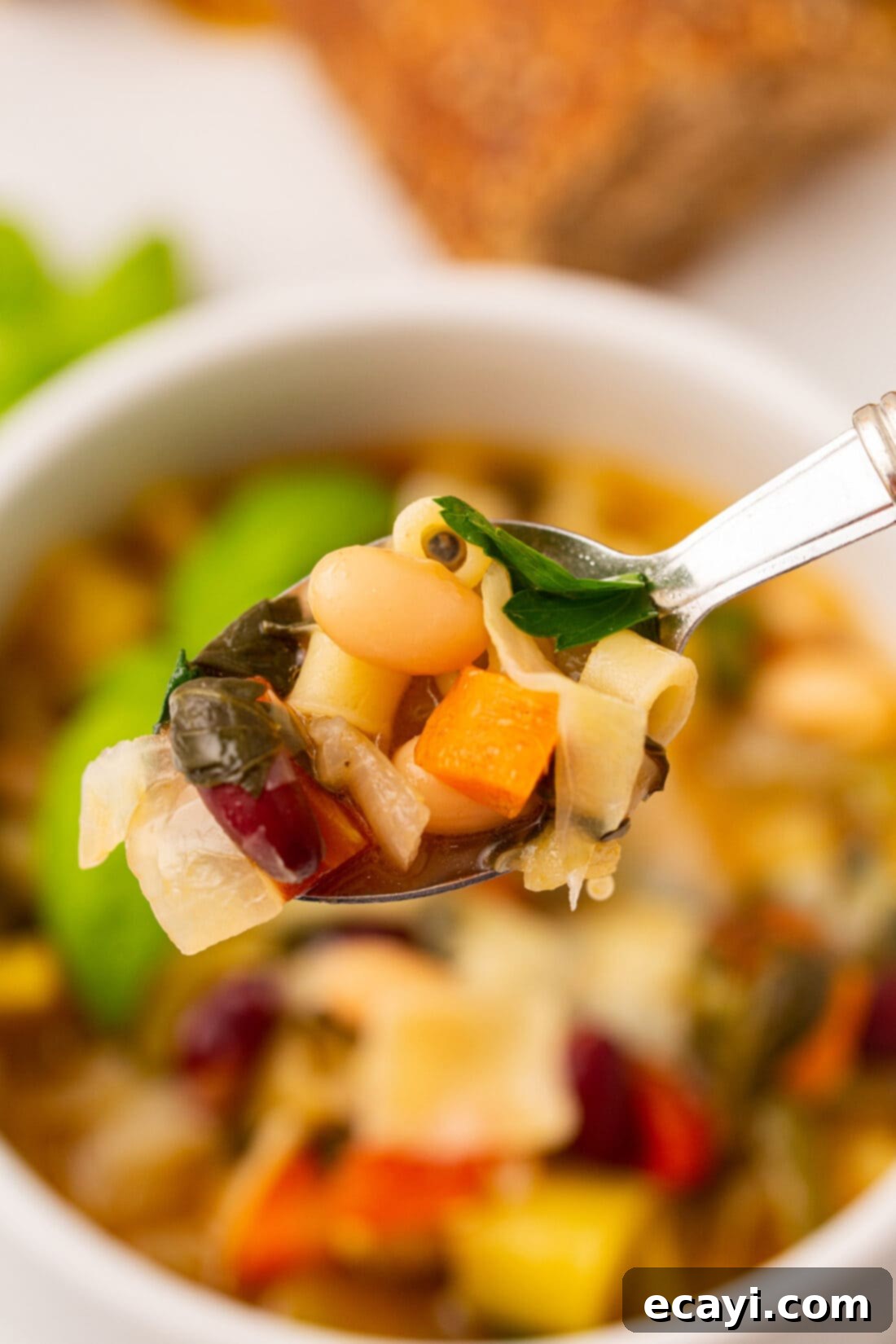
Serving Suggestions for Your Minestrone
Minestrone soup is wonderfully fulfilling on its own, making it a complete and satisfying meal. However, a few thoughtful additions can elevate the experience even further, transforming a simple bowl into a truly memorable feast. Top each bowl of minestrone soup with a generous grating of fresh Parmesan cheese for a salty, umami kick, or a sprinkle of finely chopped fresh parsley or basil for vibrant freshness and a burst of herbaceous aroma. A drizzle of high-quality extra virgin olive oil can also add a luxurious finish.
If you’d like to add extra protein to this already wholesome vegetable soup, consider crumbling in some cooked Italian sausage (spicy or mild), shredded cooked chicken, or crispy bacon bits. These savory additions can transform the soup into an even more substantial main course. For the ultimate Italian comfort meal, serve your minestrone alongside some warm and toasty homemade Italian bread, garlic bread, crunchy croutons, or even a side of focaccia, perfect for dipping into the rich, flavorful broth and soaking up every last drop.
A simple side salad with a light vinaigrette also pairs beautifully, offering a refreshing, crisp contrast to the warm, hearty soup. Whether enjoyed as a comforting starter or the main event, homemade minestrone soup is always a crowd-pleaser and a staple for nourishing meals.
More Heartwarming Soup Recipes to Explore
If you’re a fan of comforting and flavorful soups that warm you from the inside out, you’ll love exploring these other delicious and easy-to-make recipes from our kitchen. Perfect for any season, these soups promise warmth, nourishment, and straightforward preparation, making them ideal additions to your meal rotation.
- Zesty Taco Soup
- Simple & Creamy Corn Chowder
- Hearty Chicken Bean Soup
- Delicate Cream of Asparagus Soup
- Comforting Cheddar Cheese Potato Soup
- Robust Italian Sausage Tomato Orzo Soup
- Flavorful Chicken Tortilla Soup
- Classic Pasta Fagioli
- Rich Cream of Mushroom Soup
I absolutely adore cooking and baking, and there’s nothing I love more than sharing my culinary adventures and tested recipes with all of you! Remembering to check back every day for new delights can be tricky, which is why I offer a convenient newsletter delivered straight to your inbox every time a new recipe posts. Simply subscribe here and start receiving your free daily recipes to inspire your next meal, making your cooking journey even more enjoyable and effortless!
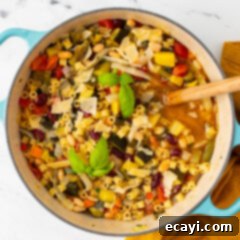
Minestrone Soup
IMPORTANT – There are often Frequently Asked Questions within the blog post that you may find helpful. Simply scroll back up to read them!
Print It
Pin It
Rate It
Save ItSaved!
Ingredients
- ⅓ cup olive oil
- ¼ cup butter
- 1 yellow onion diced
- 2 carrots diced
- 2 ribs celery diced
- ½ lb green beans frozen or fresh, cut into 1 inch pieces
- ½ head cabbage 1/2 small head of cabbage, shredded, about 2 cups
- 2 medium zucchini or squash, diced
- 16 oz diced tomatoes canned with the liquid
- 5 oz spinach fresh or frozen, drained if necessary and roughly chopped
- 6 cups vegetable stock or chicken stock, plus water if needed
- 2 tsp salt
- 1 tsp pepper
- 16 oz great northern beans or other white bean, drained and rinsed
- 16 oz dark red kidney beans drained and rinsed
- 8 oz ditalini pasta
- parmesan cheese, fresh basil, or fresh parsley optional as garnish
Things You’ll Need
-
Dutch oven (at least 7.5-8 quart capacity recommended)
Before You Begin
- This recipe was photographed in a 5.5-quart dutch oven. For best results, especially if you plan to add more liquid or if you prefer a less crowded pot, we strongly suggest using a larger 7.5 to 8-quart dutch oven. This will provide ample space for all ingredients and allow for easier stirring without spillage.
- For optimal flavor development and to ensure even cooking of vegetables, make sure to chop all your ingredients into roughly similar, bite-sized pieces before you start cooking. This consistency helps everything cook at the same rate and integrates better into the soup.
Instructions
-
In a large dutch oven (ideally 7.5 or 8 quart for ample space), heat the olive oil and butter over medium heat until the butter has melted completely and is shimmering. Add the diced yellow onions, carrots, celery, and green beans. Sauté these aromatic vegetables for approximately 10 minutes, stirring occasionally, until the onions become translucent and the other vegetables begin to soften. This initial sautéing step is crucial for building a rich flavor base for your minestrone.
-
Stir in the shredded cabbage, diced zucchini (or squash), and the canned diced tomatoes along with their liquid. Continue to cook for another 10 minutes, stirring periodically. This allows the cabbage to wilt and soften, while the tomato flavors deepen and meld beautifully with the other vegetables, adding a vital tang and depth to the broth.
-
Add the fresh or roughly chopped spinach, the vegetable (or chicken) stock, salt, and pepper to the pot. Stir all ingredients together thoroughly to combine, ensuring the spinach begins to wilt into the hot liquid. Bring the soup to a gentle simmer, then reduce the heat to low, cover the pot, and let it simmer for about 30 minutes. This slow simmer is crucial for allowing all the flavors to fully develop, blend harmoniously, and for the vegetables to become perfectly tender.
-
While the soup is simmering, cook the ditalini pasta in a separate medium-sized pot of generously salted boiling water according to the package instructions until it is al dente. It’s important not to overcook the pasta, as it will continue to soften slightly when added to the hot soup. Drain the cooked pasta thoroughly once done. Cooking the pasta separately helps prevent it from becoming overly starchy or mushy in the soup and keeps the soup broth clearer.
-
Once the soup has simmered for 30 minutes, add the drained and rinsed great northern beans and dark red kidney beans. Then, carefully add the separately cooked and drained pasta to the soup. Stir all the components gently to combine. Continue to heat the soup through for another 5-10 minutes, ensuring the beans and pasta are fully warmed and integrated into the broth. This final gentle simmer allows all components to marry their flavors effectively.
-
Taste the minestrone and adjust the seasonings (salt and pepper) if necessary – sometimes a little extra salt brings out all the flavors. Ladle the hot soup into individual serving bowls. For an irresistible finish, top with a sprinkle of fresh grated Parmesan cheese, fresh basil leaves, or chopped parsley. Serve immediately with your favorite crusty bread and enjoy your homemade, hearty, and healthy minestrone!
Nutrition
The recipes on this blog are tested with a conventional gas oven and gas stovetop. It’s important to note that some ovens, especially as they age, can cook and bake inconsistently. Using an inexpensive oven thermometer can assure you that your oven is truly heating to the proper temperature. If you use a toaster oven or countertop oven, please keep in mind that they may not distribute heat the same as a conventional full-sized oven and you may need to adjust your cooking/baking times. In the case of recipes made with a pressure cooker, air fryer, slow cooker, or other appliance, a link to the appliances we use is listed within each respective recipe. For baking recipes where measurements are given by weight, please note that results may not be the same if cups are used instead, and we can’t guarantee success with that method.
